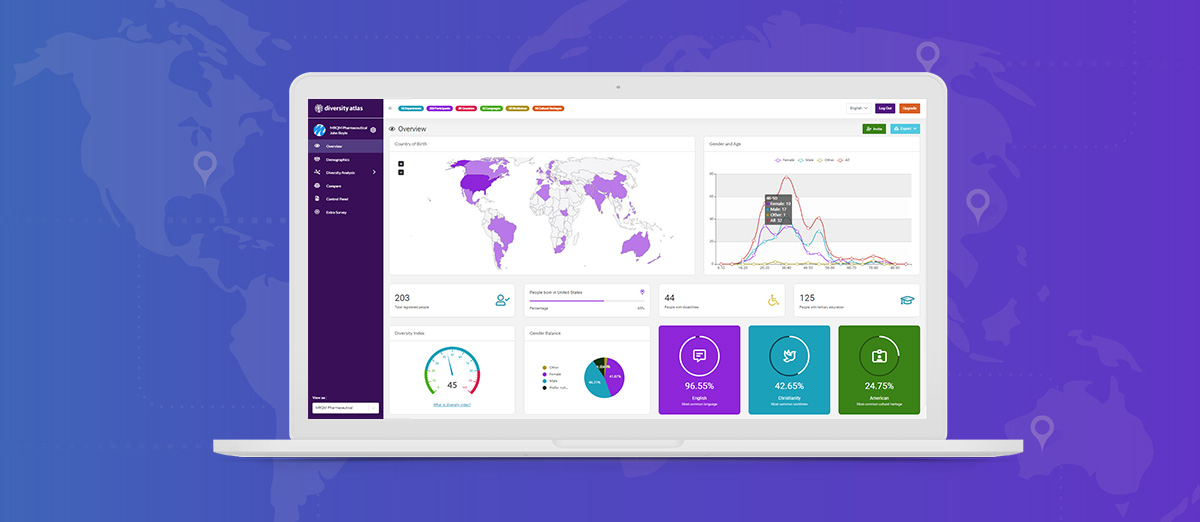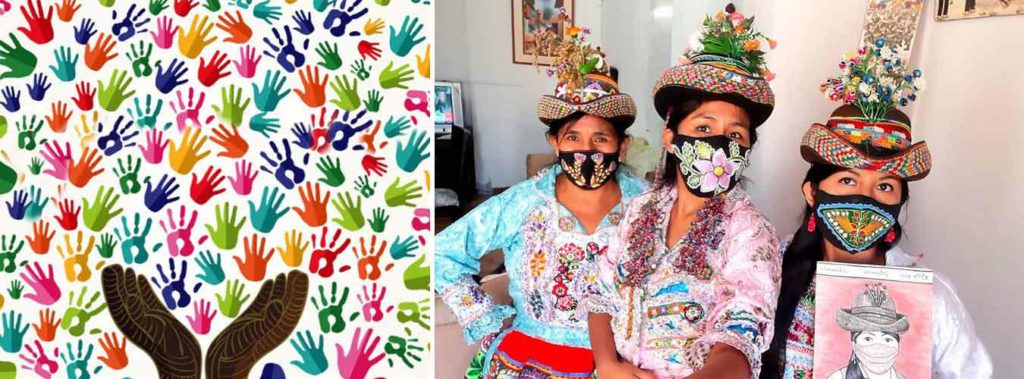
Reporting on diversity
World Day for Cultural Diversity for Dialogue and Development on May 21 provides an opportunity to deepen our understanding of the value of diversity. But how do we measure and report on diversity? In our increasingly global world, who sets the parameters for what is diverse enough? And how can we define it?

At Cultural Infusion, more than five years of research and development has led to the creation of our world-first mapping tool, Diversity Atlas.
The new platform makes it easy for teams and organisations to measure, understand and value its cultural identity while comparing their workforce diversity to the communities and customers they serve. Built to improve organisation inclusion and engagement, Diversity Atlas is an integral part of Cultural Infusion’s ambition to create a culturally harmonious world through intercultural understanding.
Diversity Atlas has begun to map workplaces and organisations, many in partnership with the Diversity Council of Australia.
Early findings across 6000 survey responses reveal some interesting insights into generational and gender differences within cultural diversity.
- Generation X and Generation Y are more likely to be secular in their approach to religion.
- Younger generations, Generation X, followed by Generation Y, are more likely to speak more than one language.
- Women, on average, are also more likely to speak more than one language compared to men
- Women are more likely to reveal their cultural heritage than men
- The most popular religion identified is none – this result is the same in Diversity Atlas and Australian Census data.
- However, organisations are typically far less representative of gender and disability compared to the national Census.
2020 as a social boiling point for inequality
Racial injustice and gender inequality have been put firmly in the spotlight this past year.
Movements such as Black Lives Matter and inequities exposed by the COVID-19 pandemic and accompanying economic downturn are creating pressure for organisations to disclose their approach to diversity and inclusion (D&I) and recognise the value of diversity.
A data-driven approach combined with a strategy that champions transparency, mutuality and inclusion has been proven to make business more productive.
Based on Deloitte research in 2017, organisations with inclusive cultures are
- twice as likely to meet or exceed financial targets,
- three times as likely to be high performing,
- six times more likely to be innovative and agile, and
- eight times more likely to achieve better business outcomes.
The study also found that up to 50% of customers have been influenced to make a purchasing decision because of an organisation’s support for equality, including issues around gender, marriage equality, disability, age or culture.
Peace through cultural inclusion
Cultural Infusion is a partner of the Australian National Commission for UNESCO and will be part of an upcoming global webinar event “Peace and Development : Why Diversity Matters” organised by Connectors for Peace to mark World Day for Cultural Diversity. Representatives of UNESCO, world governments, universities, NGOs and the private sector will explore the value of diversity in achieving development and peace.
According to UNESCO, three-quarters of the world’s major conflicts have a cultural dimension. Through bridging this gap between cultures, we can work towards peace, stability and cultural development.
In recognising the value of diversity, our global society can use it as a driving force of emotional and intellectual development as well as economic stability.
This past year has seen cultural events cancelled, cultural institutions closed, community cultural practices suspended and empty UNESCO World Heritage sites. The social, economic and political impact of COVID-19 on the cultural sector is being felt around the world.
The heightened risk of looting of cultural sites and poaching at natural sites are a great concern as are the millions of artists unable to make ends meet and the effect of shutdowns and closed borders on cultural tourism.
Access to culture is a fundamental right. The social rights of artists and creative professionals, and the protection of a diversity of cultural expressions are key issues for our global society as we emerge from the COVID-19 pandemic.
However, during this time, we have witnessed a surge in online content as we virtually visit museums, galleries, watch films, community choirs and orchestral performances.
As Australians, who call ourselves the most successful multicultural society in the world, we are happily embracing these events live, now that state borders are open and lockdowns become fewer and further between. We can indulge in multicultural community events, explore art from around the globe in our galleries and return to work collectively once more.
In this post-COVID world, inclusion and feeling part of something bigger has taken on new meaning. After months apart, we are coming together and understanding that what brings us together is what matters.
Share this Post
